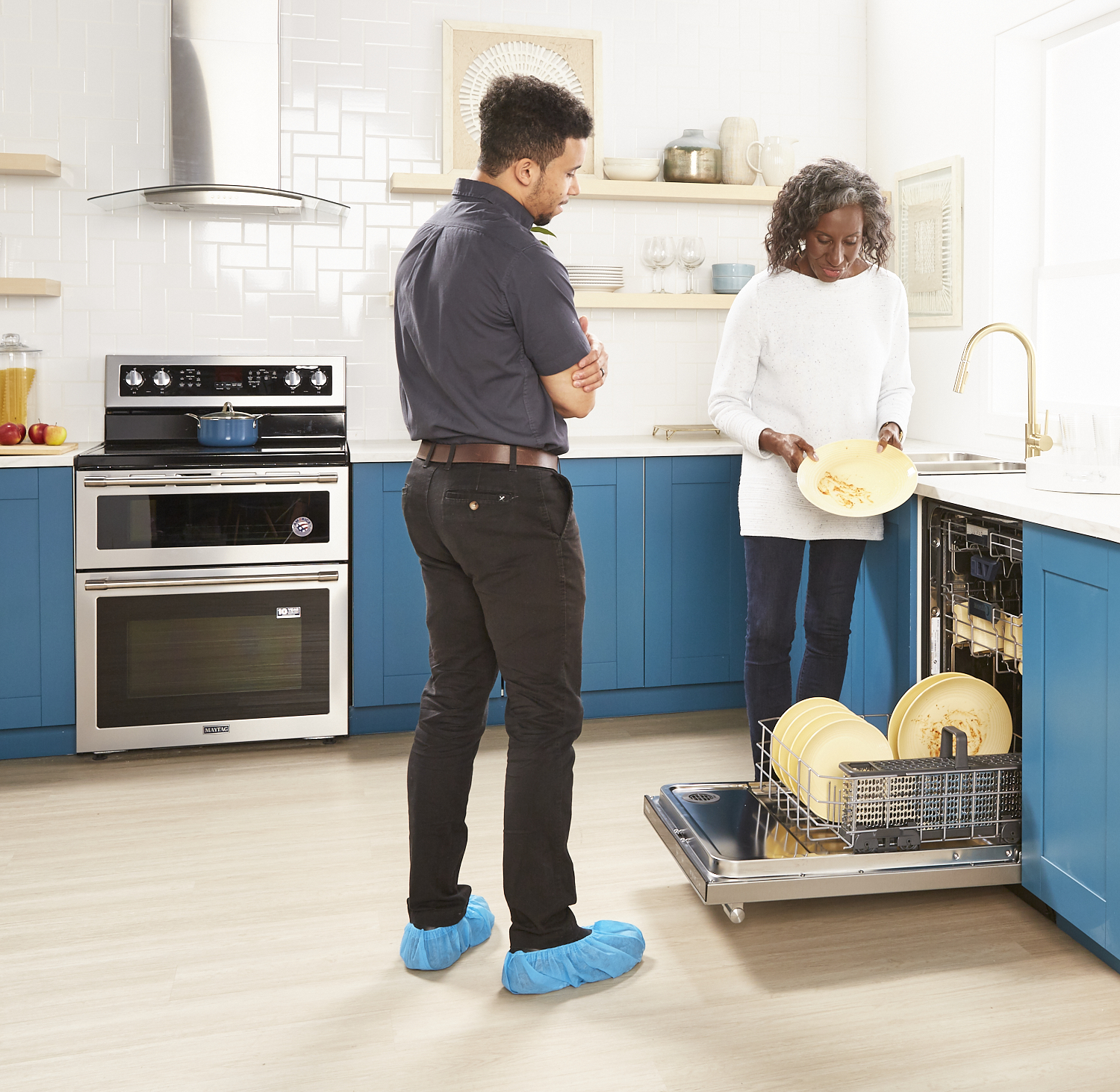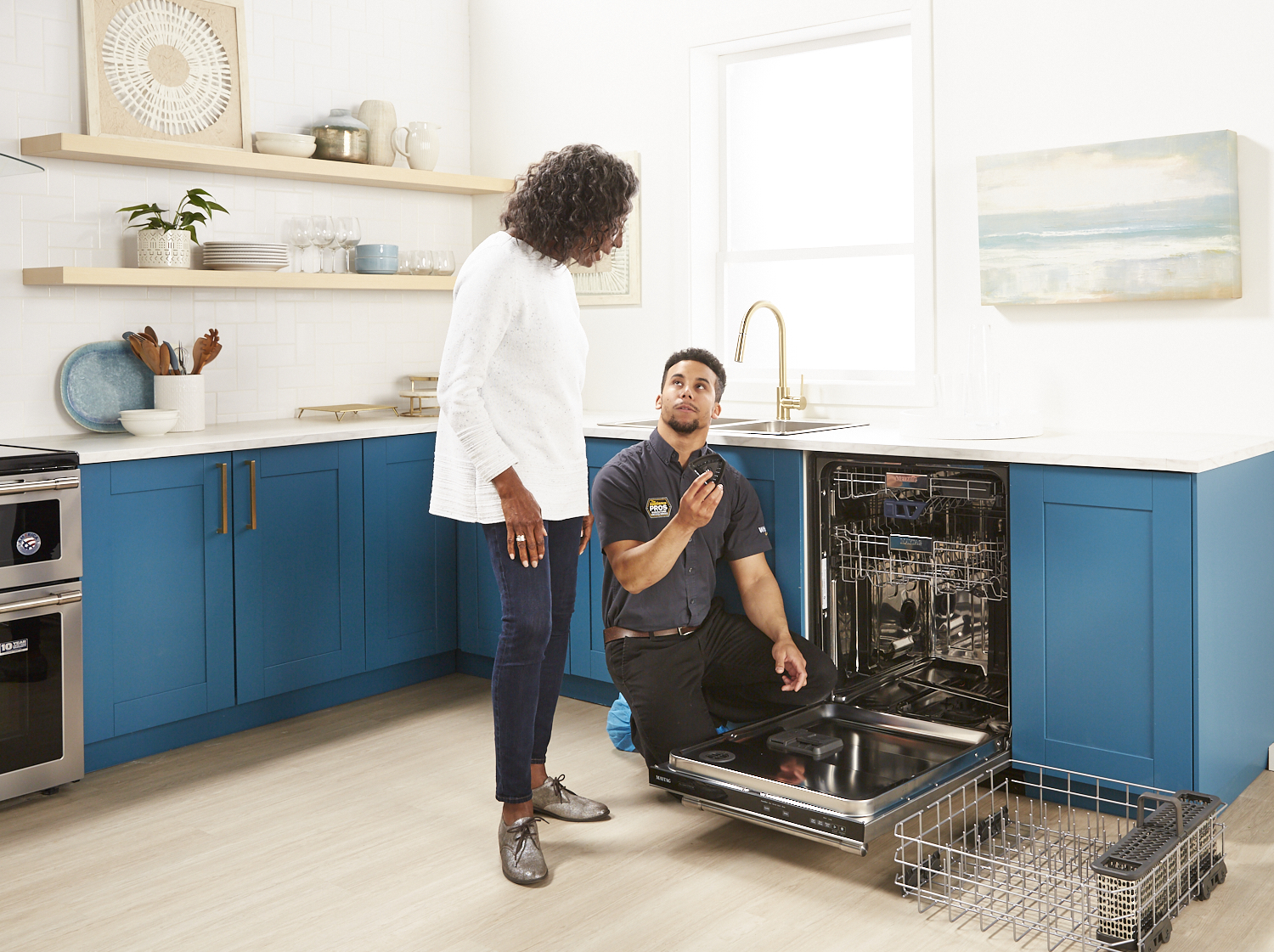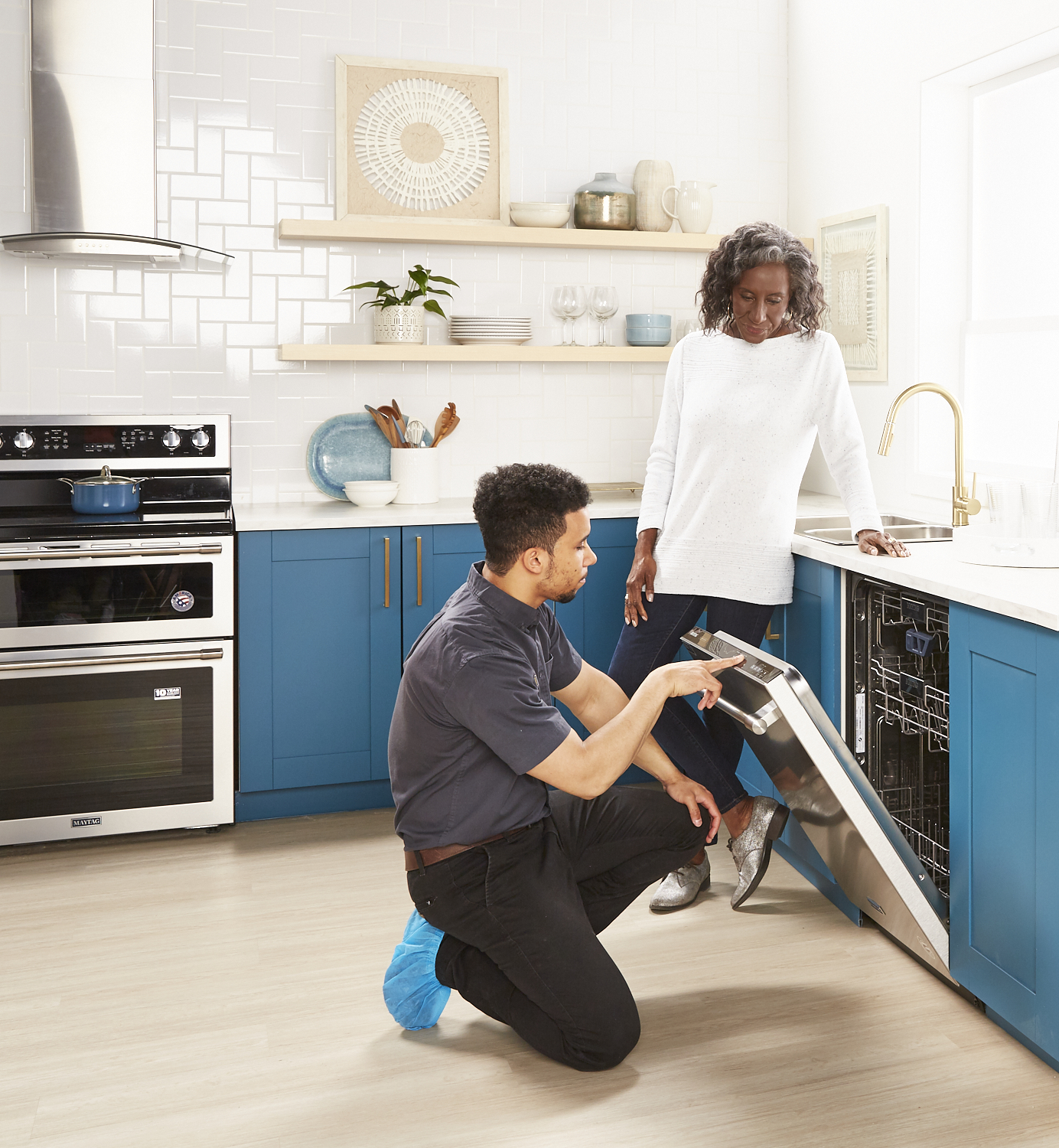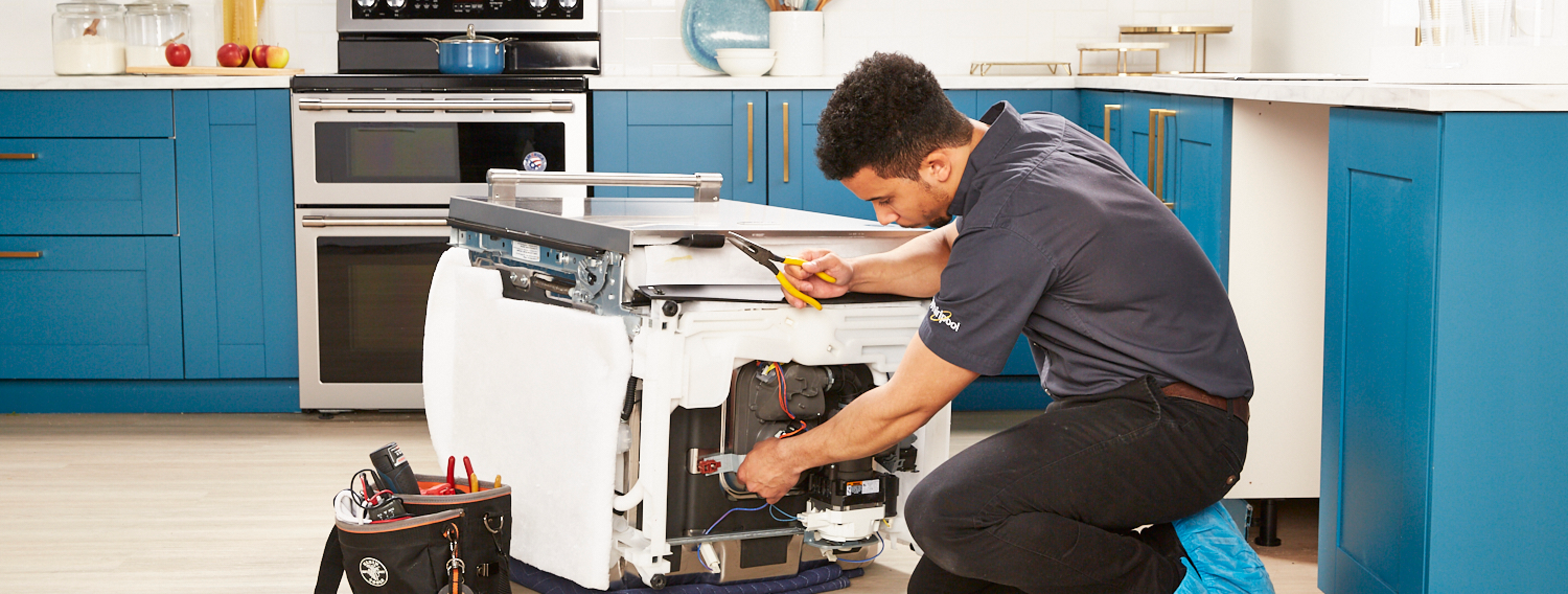A dishwasher is an important appliance in every home. It makes cleaning up after a meal easy and ensures you have clean dishes and cutlery for your next meal. It also frees you up to spend quality time with your loved ones.
If you have a clogged dishwasher or it’s not cleaning properly or making a grinding noise, a common solution could fix the problem. Even if you’re not handy, dishwasher repair is possible if you’re prepared and understand the steps.
This article will show you how to fix a dishwasher if it’s experiencing a common issue.
Tools and Equipment
Many of the dishwasher repairs this article covers may require one or more of these tools or pieces of equipment:
- Slot and Phillips-head screwdriver
- Putty knife
- Combination wrench set
- Work gloves
- Needle-nose pliers
Some repairs might also call for a multimeter, which is an electronic measuring tool to measure voltage, current and resistance. It’s recommended to confirm which tools and equipment are needed for a specific repair before you start.

Dishwasher Not Cleaning
If your dishwasher is not cleaning, the first step is to see if the appliance isn’t dirty. Try checking the following parts for food particles, grease and other types of debris:
- The strain screen
- Sprayer arms
- Door gaskets
The next step is to run a cleaning cycle with an empty load using a dishwasher cleaner like affresh Dishwasher Cleaner.
Spray Arms
A dishwasher not cleaning could be the result of the spray arms malfunctioning or being obstructed. Here are some ways to repair the problem:
- Check if there’s any hard water buildup on the spray arms. If so, try to clean the spray arms to remove the buildup.
- Inspect to see if the spray arm can move freely and isn’t obstructed by any item in the load.
- Inspect to see if the spray arm bearing ring may be loose or worn down, preventing an effective spray pattern.
- Inspect the spray arm for cracks or holes plugged by food or debris like cellophane. If you find a plugged hole, there might be a problem with the filter system.
- Make sure the mounting bracket isn’t loose, restricted or cracked.
Upper Discharge Housing Gasket
Another source of the issue could be the upper discharge housing gasket. This part is located on the discharge cover above the circulation impeller. If it’s loose then it might be preventing your dishwasher from cleaning. Simply tighten it to fix the problem.
When replacing this gasket, check that there’s no debris preventing the gasket from fitting properly.
Wrong or Old Detergent
One simple solution to not overlook is that you may not be using a detergent that’s high-quality enough or one that’s been in a cabinet for too long.
Dishwasher Not Drying
Your dishwasher not drying could be related to an issue with one of these components:
Heating Element
As you can probably guess, the heating element is responsible for drying dishes. To test if the heating element in your dishwasher is malfunctioning, follow these steps:
- Make sure that your dishwasher is turned off.
- Check for continuity using a multimeter. You can find the heating element’s terminals beneath the tub, which can be accessed by removing the lower panel.
- Check the condition of the wires and terminals. If any look old or worn down, they might need to be replaced.
High-Limit Thermostat
The high-limit thermostat is a safety device that prevents the dishwasher from overheating. A malfunctioning one shuts off the heat before it has a chance to dry a load.
Locate this thermostat at the bottom of the dishwasher tub after removing the lower access panel. Then, you can check for continuity with a multimeter.
Rinse Aid Dispenser
Rinse aid helps dishes and other items shed water but if it’s not working properly, it could be preventing your dishwasher from effectively drying your dishes. To inspect:
- Confirm that the rinse aid chamber is not empty.
- Inspect to see if the cap is properly fitted and adjusted.
Dishwasher Rack Repair
If your racks won’t roll out, you can:
- Fix the alignment of the rack
- Check the rollers or wheels for damage
If the damage is severe, you may have to replace them.

Dishwasher Making a Loud Noise
A noisy dishwasher could be from a broken or malfunctioning part. Check the following parts to see if they’re causing any unnecessary noise.
Pump
The pump is a key part of any dishwasher. A defective pump might need to be replaced or you may need to replace the wash arm seal or bearing ring.
A pump can both mechanically or electronically fail. Use a multimeter to test if the failure is electrical. If the result is negative for continuity, the pump could be defective. If it’s positive, there may be a mechanical failure such as:
- A broken or obstructed impeller
- A seized motor bearings
Issues with the bearings require a new pump motor. An obstruction, however, can be cleared so that the impeller can spin.
Wash Arm Bearing Ring and Spray Arm Seal
These plastic parts support the wash arm or spray arm. They can cause a lot of noise if they’re loose or worn down.
Spray Arms
Inspect that the spray arms have enough room to turn freely without hitting anything. Wobbly spray arms could mean that the centre hub of the part may be worn down. In this case, it might need to be replaced.
Dishwasher Making a Grinding Noise
A dishwasher making a grinding noise could be due to a foreign object, like a piece of hard food, having fallen into the bottom of the appliance. Hard food can lodge itself inside the pump or the gears.
The first step is to open, empty and clean your dishwasher. During this process, you might find the object that’s causing the grinding noise. It can be as small as a kernel or as large as a piece of flatware.
A grinding noise can also be attributed to an improperly loaded dishwasher, causing items to knock against each other. Try to load contents in the appropriate areas of the rack so that they are secure while being washed.
Clogged Dishwasher
If your dishwasher is clogged, here are two ways to troubleshoot the problem.
Clean the Interior
Every dishwasher collects a ton of food particles, grease, hard water mineral deposits and other types of debris from every cycle. One option is to use affresh Dishwasher Cleaner, which can clean a dishwasher’s tub, racks, pump and valve and drain and recirculation hoses.
You can also use a vinegar solution to remove mild buildup by pouring three cups of vinegar into the bottom and running a full cycle.
Clean the Dishwasher Filter
Most dishwashers have removable filters. It’s recommended to clean these from time to time.
To remove and clean a filter:
- Remove the twist-off cap that hides the filter. This can usually be found under the racks.
- Remove the filter and clean it under hot water. Gently rinse with warm, soapy water and gently scrub any residue.

Need More Help?
If you need help diagnosing a problem with your dishwasher or repairing it, book a service appointment today.





